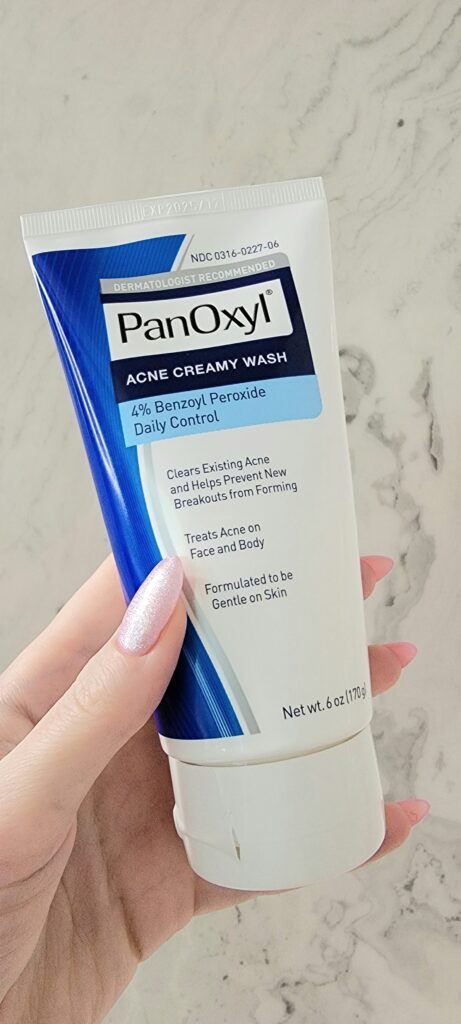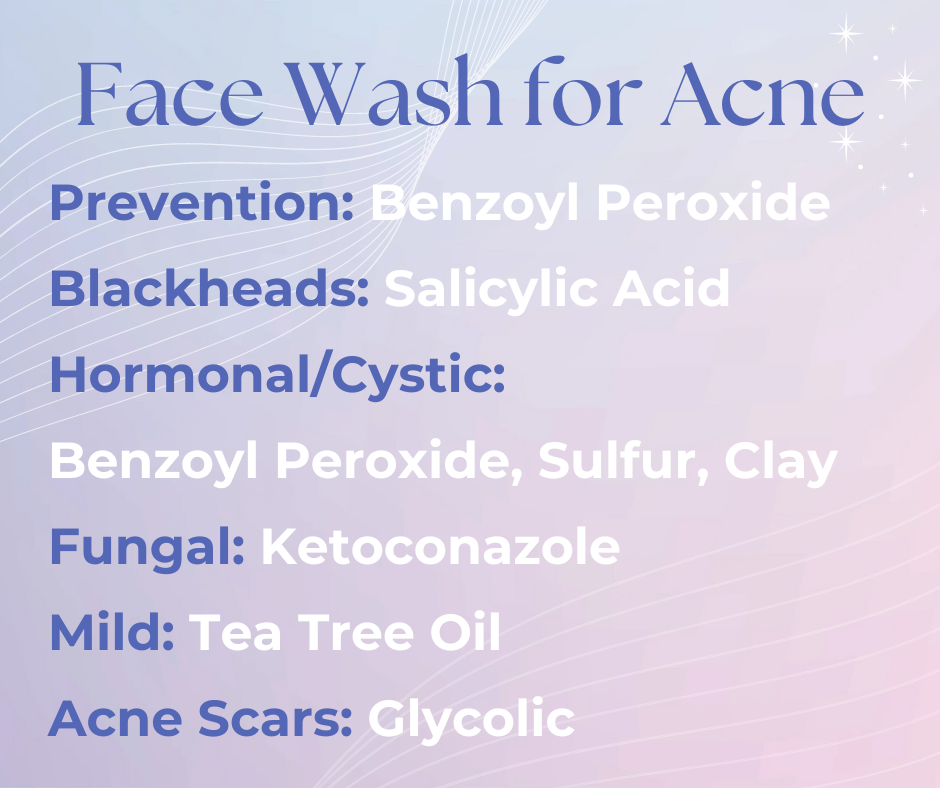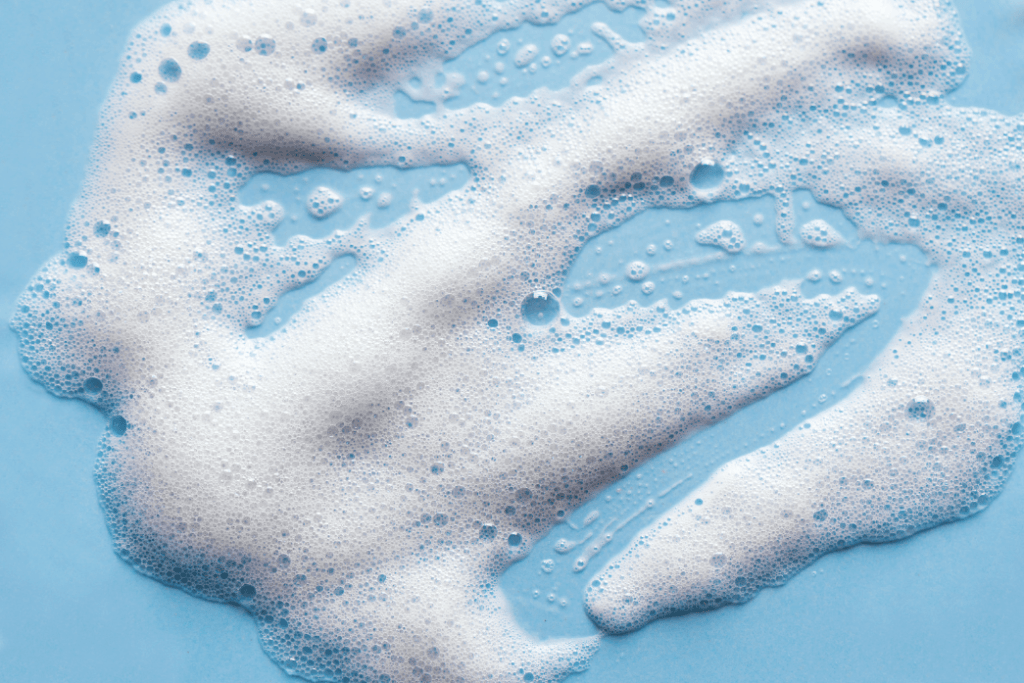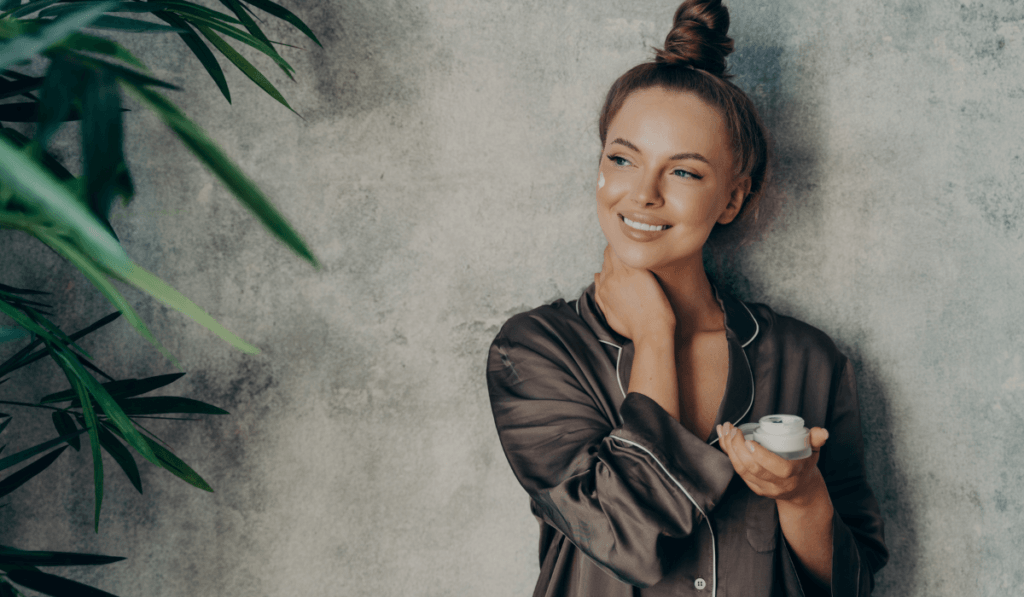This post contains Amazon affiliate links.
Disclaimer: While this post aims to provide informative insights, it’s important to note that I am not a doctor, dermatologist, or medical esthetician. For personalized skincare advice, it’s always best to consult a licensed medical professional, ensuring you make informed decisions about your skincare routine.
If you have acne-prone skin, navigating the sea of cleanser options promising to work miracles can feel overwhelming.
So what is the best face wash for acne?
It’s not just about finding something that claims to banish blemishes; it’s also about understanding your skin’s unique characteristics. Acne isn’t a one-size-fits-all issue; it varies greatly depending on your skin type, the kinds of acne you’re dealing with, and the condition of your skin barrier. In this post, I’ll go over the different kinds of cleansers that can be beneficial for acne-prone skin and help you decide which one you should pick.

First, Check In On Your Skin Barrier
How is your skin barrier doing? Is your skin feeling sensitized, itchy, or extra dry? Here’s the kicker: if your skin barrier could use some repairing, using harsh acne-fighting ingredients can backfire, causing more inflammation and worse breakouts. You want to start out with a gentle, nurturing cleanser and use some barrier repair serums or moisturizers to get back to baseline.
Once you have a strong skin barrier, you can then thoughtfully introduce products designed to target acne directly. But remember, your first attempt doesn’t need to be your last. Acne care is all about listening to your skin and adjusting as needed. You’re already making a major improvement by approaching it with a strategic plan and prioritizing your skin health.
Best Face Wash for Acne
Let’s go over the different kinds of cleaners for acne, when to pick each one, and my favorite product in each category.
This post contains Amazon affiliate links.
Benzoyl Peroxide Cleansers:
Purpose: Targets and kills acne-causing bacteria.
Best For: Hormonal, cystic acne, reducing inflammation and preventing breakouts.
Best Cleanser: PanOxyl Acne Creamy Wash, 4% Benzoyl Peroxide
Known for targeting and exterminating acne-causing bacteria, benzoyl peroxide is a cornerstone in the acne-fighting arsenal. It’s stellar for reducing inflammation and preventing breakouts before they gain a foothold.
The best part about using benzoyl peroxide in cleanser form is that it’s less likely to stain towels, clothes, and pillowcases. I use it in the shower by applying it like a mask and letting it sit on my face while I continue on with my shower routine. That gives it enough time to do its work before rinsing it off.
Another benefit of using benzoyl peroxide in cleanser form is that it can be paired with other ingredients, such as salicylic acid and retinol, without being overly harsh.
What percentage strength of benzoyl peroxide should you look for in a cleanser? Use between 2.5% – 5% for your face and 10% for your back and body.
I love the PanOxyl Acne Creamy Wash and use it daily in the shower. The formula is thick enough that it is easy to apply in the shower, and it actually stays on my face. It has been very effective at keeping most of my breakouts at bay.

Salicylic Acid Cleansers:
- Purpose: Exfoliates and unclogs pores.
- Best For: Treating blackheads and whiteheads.
- Best Cleanser: CeraVe Acne Control Cleanser
Salicylic acid cleansers can change your skincare game if you’re constantly battling blackheads and whiteheads. They work by exfoliating and unclogging pores, making them indispensable in the pursuit of clear skin. Salicylic acid can be more potent in a leave-on toner or serum but can also be effective in cleanser form for those with sensitive skin. Remember, consistent use is key here for visible results.
The CeraVe Acne Control Cleanser helps keep pores clean and clear while also strengthening the skin barrier with ceramides.
Ketoconazole Cleansers:
- Purpose: Anti-fungal, helps treat fungal acne (Malassezia folliculitis).
- Best For: Addressing fungal acne and balancing the skin’s microbiome.
- Best Cleanser: Nizoral Anti-Dandruff Shampoo
Now, what about those pesky breakouts that just don’t seem like your typical acne? If you have an itchy scalp and a lot of small bumps across your forehead, you might be dealing with Malassezia folliculitis. Enter ketoconazole shampoos.
A shampoo??
Yeah, this type of shampoo can actually be beneficial for some people when used as a face cleanser. I wouldn’t recommend it every night, but if you suspect you have Malassezia folliculitis, it might be worth a try to use it once or twice a week as both a shampoo and a face cleanser.
Of course, if a dermatologist has diagnosed you with Malassezia folliculitis, follow their instructions for what products to use and how often.
I have dealt with tiny bumps all over my forehead off and on over the years. When that happens, I always turn to Nizoral and use it as a weekly treatment on both my scalp and face to get things back in balance. This antifungal rockstar not only helps in treating fungal acne but also plays an important role in balancing your skin’s microbiome.
Sulfur Cleansers:
- Purpose: Reduces oil and has antibacterial properties.
- Best For: Hormonal, cystic acne and reducing oil production.
- Best Cleanser: Tula Acne All-Star Cleanser and Mask
For those grappling with inflammatory acne and excessive oil production, sulfur cleansers could be your skin’s new best friend. They reduce oiliness while also packing an antibacterial punch. With sulfur watching your back, you can say goodbye to some of the more inflamed, stubborn acne.
Sulfur usually has a strong odor, but at least that washes off in cleanser form!
The Tula Acne All-Star Cleanser and Mask is multifunctional. It can be used as a daily cleanser, a mask, or a spot treatment. If you feel a really deep cyst starting to form, use this as a spot treatment to tackle that spot ASAP.
Clay-based Cleansers:
- Purpose: Absorbs excess oil and impurities.
- Best For: Oily and sensitive skin types.
- Best Cleanser: Skinfix Barrier+ Foaming Clay Cleanser
Clay-based cleansers do double duty by absorbing excess oil and yanking out impurities from the depths of your pores. These powerful yet natural detoxifiers are a great option for oily and acne-prone skin types that also experience sensitivity. If your skin cannot tolerate benzoyl peroxide or sulfur cleansers, then a clay cleanser would be your next best option.
The Skinfix Barrier+ Foaming Clay Cleanser is an awesome option because the clay gets to work on impurities, but the cleanser is also formulated to keep your skin barrier in balance and not strip it dry.
Tea Tree Oil Cleansers:
- Purpose: Natural antibacterial and anti-inflammatory properties.
- Best For: Soothing and treating mild to moderate acne.
- Best Cleanser: Dr. Jart+ Teatreetment Cleansing Foam
If you lean towards natural remedies, then tea tree oil cleansers might strike a chord. With their antibacterial and anti-inflammatory properties, they soothe and treat mild to moderate acne gently without going full throttle on your skin.
This can also be a great option for teenage acne.
Glycolic Acid Cleansers:
- Purpose: Exfoliates the skin and promotes cell turnover.
- Best For: Improving skin texture and reducing post-acne marks.
- Best Cleanser: Glytone Mild Gel Cleanser
Glycolic acid cleansers help promote exfoliation and cell turnover. They’re great for improving the texture of your skin and also for fading those stubborn post-acne marks that like to overstay their welcome. These are a great option once your breakouts are under control and you have shifted to tackling the leftover redness and scarring.

Formulating Your Acne Defense
Now that you understand the ingredients above, pick out one or more that applies to your skin right now.

- Identify Your Skin Type: Determine if you have oily, dry, combination, or sensitive skin.
- Know Your Acne Type: Understand whether you’re dealing with blackheads, whiteheads, cystic acne, or fungal acne.
- Choose Ingredients: Use the section above to look for ingredients that address your specific acne and skincare concerns.
If you saw one ingredient that you immediately knew was the best fit for you, go ahead and take a look at the recommended cleanser and consider some related options too.
If you are interested in more than one ingredient, don’t worry, there are options!
Multi-Active Approach
If you’re looking to ramp up your fight against acne, combination cleansers might be the ticket. These multitasking warriors use different active ingredients that work in harmony to tackle acne from multiple angles.
For example, the CeraVe Acne Control Cleanser uses both 2% salicylic acid and hectorite clay to cleanse pores and control oil production. Finding a multi-active cleanser can really customize your routine!
Day and Night Cleansers
You can use cleansers from two different categories by using one in the morning and the other at night.
I do this by using my PanOxyl 4% Benzoyl Peroxide cleanser when I shower and a hydrating, skin-protecting cleanser when I wash my face at the bathroom sink.
And sometimes, a cleanser like sulfur or ketoconazole will be used more as a weekly treatment. So really, you could have 3 different cleansers in rotation if you really wanted to be extra.
Remember to Double Cleanse
When double cleansing, your first cleanse should focus on just removing makeup, dirt, and oil from your face. Don’t worry about your first cleanser having anything to do with treating your acne.
Use your acne-fighting cleanser as your second cleanse so it can get into your pores and do its job without being blocked by other residue.
Introduce New Ingredients Slowly
Integrating a cleanser with one or more active ingredients into your routine should be done mindfully. Start slowly, using the product a few times a week. Monitor for signs of dryness or irritation, which may indicate you need to scale back or choose a milder option. Gradually increase usage as your skin builds tolerance. This is crucial to ensuring that your acne treatment journey is effective and sustainable over time without compromising your skin’s health.
You’ve got this!
In my opinion, an effective skincare routine for acne-prone skin takes patience, persistence, and a willingness to adapt. Your first attempt doesn’t need to be your last. If one approach doesn’t work, don’t worry too much about it. Your understanding of your skin will increase, and you’ll find the right products and routine that suit you best.
What cleanser are you using to tackle acne-prone skin? Share your pick in the comments below!



Thank you for such an informative post, Kiersten! I appreciate how you’ve broken down the different types of acne-fighting cleansers and highlighted their specific benefits. It’s helpful to understand that treating acne isn’t a one-size-fits-all approach and that focusing on repairing the skin barrier first is key. I was particularly intrigued by the idea of using ketoconazole shampoo for fungal acne—something I hadn’t considered before! Your tip about using benzoyl peroxide in the shower is also a game-changer. I’ll definitely be incorporating some of these insights into my skincare routine.
My brother and I fought acne when we were teens – my brother worse than I. That was back in the 70s. I think all we had was Clearasil back then. My daughters then tackled it in the 90s – one daughter more than the other. Now my older daughter has teen girls that struggle some with it. I am sure science has made progress in this ongoing problem for everyone.
Keep up the great work!
– Scott
Thanks Scott! I actually got that Ketoconazole shampoo tip from a few different dermatologists. It seems so out of left field, but it’s been surprisingly useful.
There have certainly been many advancements in treating acne, especially in ways that aren’t so harsh on the skin. I will be researching and writing about some new laser options soon.
Those of us who have gone through acne are warriors after navigating the physical and emotional toll!
Struggling with acne can be such a challenge, specially if you have an ongoing battle with it. So it is very helpful to know that that there are several products that can be used, depending on your skin type and specific acne problems.
It is great to see that there are also natural options like tea tree oil. I have very successfully used tea tree oil products for outbreaks of spots, and will see which of the other products would be best for me. Thank you for sharing this helpful information.
That’s so wonderful that tea tree oil has worked out well for you! Keep glowing!